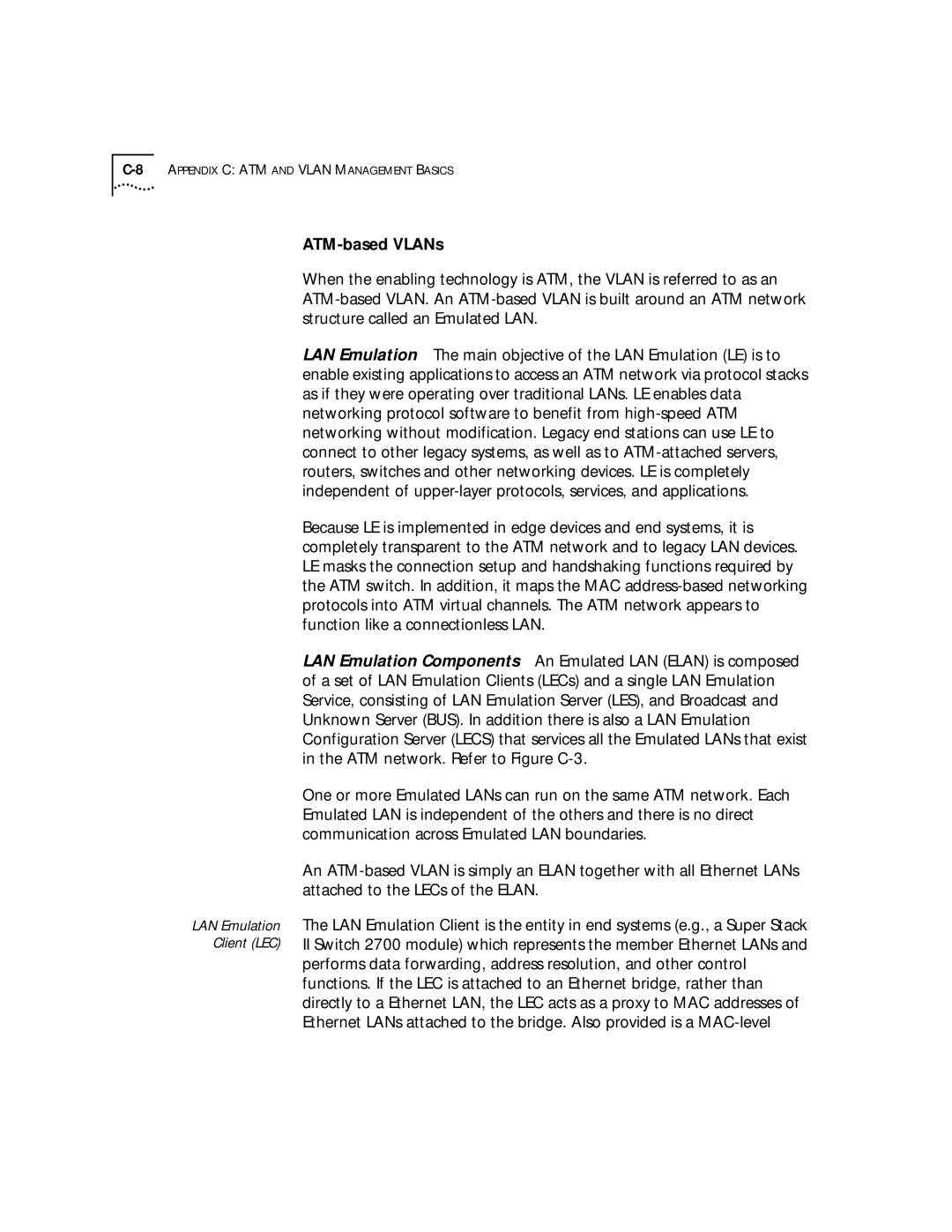LAN Emulation Client (LEC)
ATM-based VLANs
When the enabling technology is ATM, the VLAN is referred to as an
LAN Emulation The main objective of the LAN Emulation (LE) is to enable existing applications to access an ATM network via protocol stacks as if they were operating over traditional LANs. LE enables data networking protocol software to benefit from
Because LE is implemented in edge devices and end systems, it is completely transparent to the ATM network and to legacy LAN devices. LE masks the connection setup and handshaking functions required by the ATM switch. In addition, it maps the MAC
LAN Emulation Components An Emulated LAN (ELAN) is composed of a set of LAN Emulation Clients (LECs) and a single LAN Emulation Service, consisting of LAN Emulation Server (LES), and Broadcast and Unknown Server (BUS). In addition there is also a LAN Emulation Configuration Server (LECS) that services all the Emulated LANs that exist in the ATM network. Refer to Figure
One or more Emulated LANs can run on the same ATM network. Each Emulated LAN is independent of the others and there is no direct communication across Emulated LAN boundaries.
An
The LAN Emulation Client is the entity in end systems (e.g., a Super Stack
IISwitch 2700 module) which represents the member Ethernet LANs and performs data forwarding, address resolution, and other control functions. If the LEC is attached to an Ethernet bridge, rather than directly to a Ethernet LAN, the LEC acts as a proxy to MAC addresses of Ethernet LANs attached to the bridge. Also provided is a
